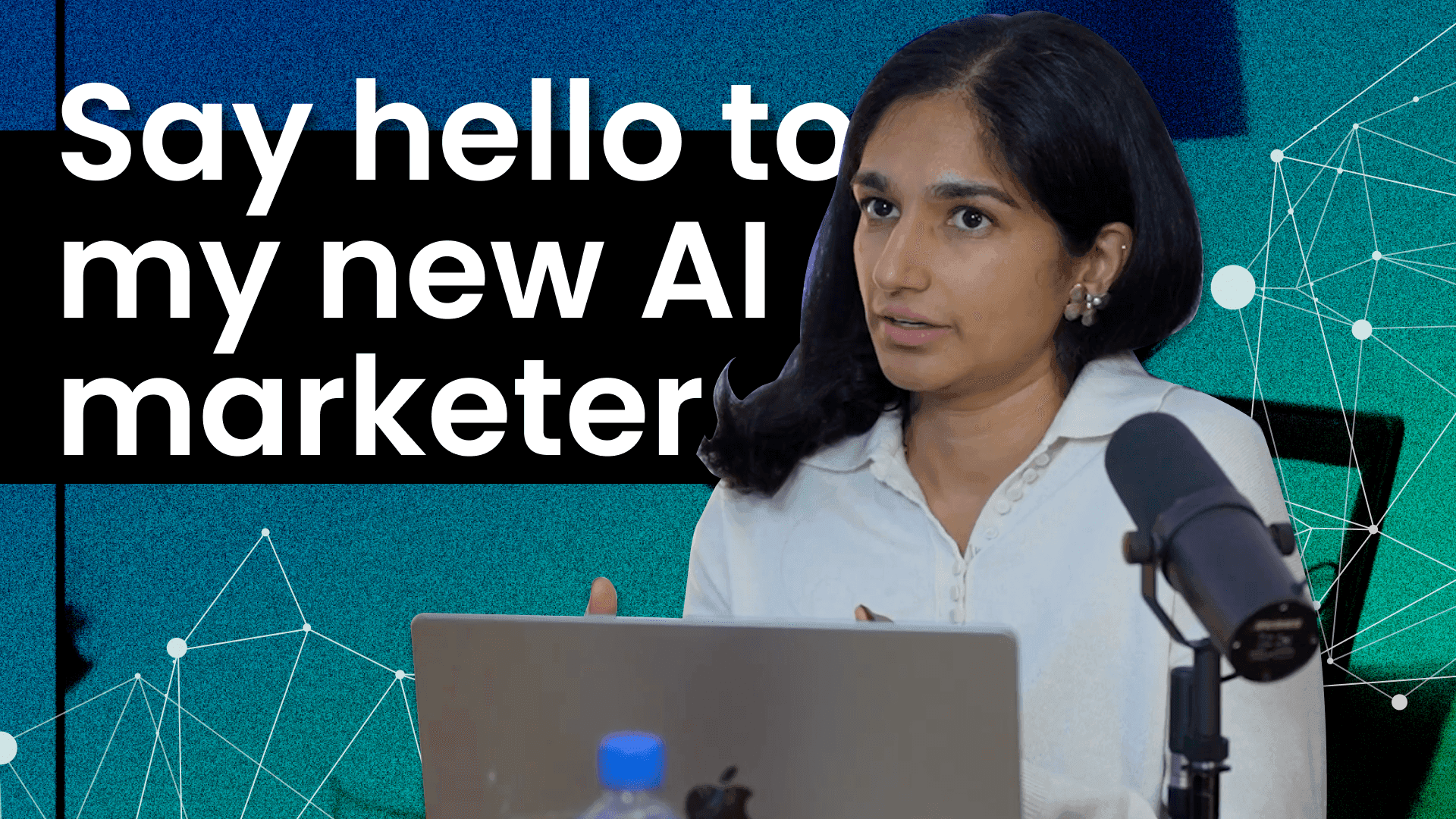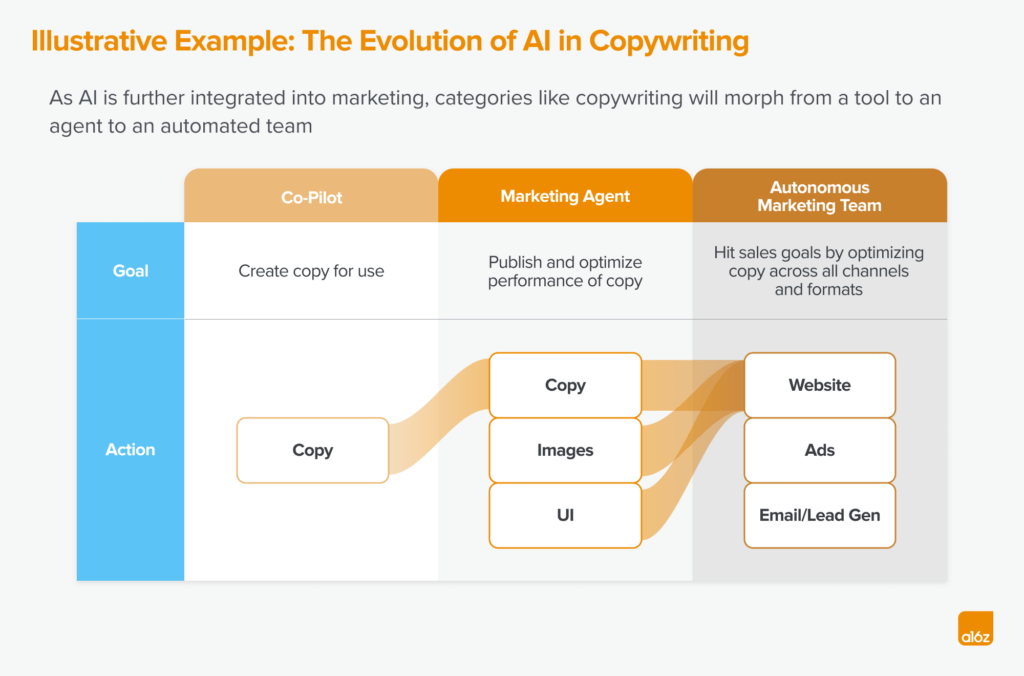Gen AI's Impact on Marketing: From Copilots to Autonomous Teams

Say Hello to My New AI Marketer: How Gen AI-Based Software Is Advancing Marketing and Sales
Generative AI (GenAI) has captured headlines with its creative content generation capabilities, from animated shorts to AI-generated music. However, its impact on business, particularly in marketing, is equally significant and perhaps more valuable. Marketing, being an iterative, creative, and dynamic practice, is exceptionally well-suited for GenAI adoption. Unlike fields like fintech, where precise answers are paramount, marketing thrives on varied solutions and creative exploration.
The Evolving Landscape of Marketing
Companies are increasingly looking for scalable ways to create personalized campaigns to reach customers across fragmented digital locations. Traditional marketing teams often face challenges due to silos and disparate, non-integrated tools. GenAI-based software is emerging as a solution to bridge these gaps, enabling more efficient and effective marketing efforts.
The financial implications are substantial. A McKinsey report estimates that GenAI in marketing and sales could generate an annual global productivity boost of $3.3 trillion. Companies like Klarna are already saving $10 million annually by using GenAI for image generation and reducing reliance on external partners.
Three Phases of GenAI Adoption in Marketing
The adoption of GenAI in marketing can be understood in three distinct phases:
-
Developing Marketing Copilots
- Current Stage: Marketers are using GenAI as assistants to handle repetitive tasks like drafting emails, newsletters, and SEO-friendly blog posts. Tools like ChatGPT allow outsourcing first drafts, freeing up marketers for higher-level strategic work.
- Tools and Examples: Platforms like Jasper and Copy.ai can scale social media posts and sales emails rapidly. HeyGen and Synthesia enable the creation and editing of studio-quality videos quickly.
- Future Capabilities: Marketers will leverage AI to create brand-aligned assets by ingesting data from customer data platforms, websites, style guides, and third-party sources. Human oversight remains crucial for quality control (e.g., approving likenesses, brand consistency).
- Beyond Content Creation: Copilots will assist with audience segmentation, campaign planning, and real-time data analysis. Tools like Validated, Outset, and Voicepanel help in identifying customer segments and testing concepts.
- Workflow Integration: Products become "sticky" by integrating into workflows, assisting with project tracking, collaboration, brand voice alignment, and performance metrics. Jasper, for instance, evolved from copy creation to enabling team collaboration and insights.
- Emerging Verticals: New companies are expected to emerge in areas like video and 3D animation, which currently have fewer established players.

-
Building Marketing Agents
- Next Stage: Automating marketer tasks through AI agents, shifting from a one-to-many to a one-to-one hyper-personalized approach.
- Personalization: Marketers can personalize each ad based on specific audience and preference data, leading to better performance than generic campaigns.
- End-to-End Tasks: AI agents are beginning to handle narrow, end-to-end marketing tasks like A/B testing, ad bidding optimization, attribution tracking, and content iteration based on performance data.
- Autonomous Operation: Agents integrate with performance data and content creation tools, using judgment to experiment and drive results. They can also gather market research and competitive intelligence across various channels.
- Example: Email Marketing Agent: An AI agent could automatically generate, personalize, schedule, and adjust email content based on product data, demographics, and campaign performance, as seen with tools like Coframe for website copy and images.
- Strategic Focus: Agents will supplement individual roles, allowing marketers to focus on strategic planning, targets, and metrics. They enable more frequent experiments by suggesting, making (with approval), and analyzing changes.
- Convergence with Sales: This shift towards one-to-one marketing will lead to greater convergence between sales and marketing. Solving the attribution problem is key for AI agents to make informed decisions.

-
Turning into the Automated Marketing Team
- Final Stage: AI agents fully assume the duties of a CMO, operating as an autonomous marketing team. Swarms of agents will replicate or supplement a team's full-service capabilities.
- Full-Service Capabilities: By integrating single-purpose agents across all mediums, they can produce the strategy and assets for a complete marketing plan.
- Simplified Operations: Companies will only need to input a budget and a goal. The software will manage analytics, performance across channels, and omnichannel strategies.
- Content Iteration: AI can optimize content for different platforms (e.g., TikTok vs. Instagram) and generate new content types from existing assets (e.g., blog posts becoming landing pages, ad copy).
- Platform Evolution: Companies will likely start in specific verticals (like video or email) and expand, similar to Klaviyo's growth from email to text messaging. This could lead to integrated platforms like Adobe or Salesforce Marketing Cloud.
- Market Segmentation: A split is expected between B2B and B2C platforms, and between SMB and enterprise solutions, due to differing needs and user experiences. SMBs will gain significant leverage, accessing the capabilities of a full marketing team.
- Human Role: A human leader (CMO, VP of Marketing, or Go-to-Market leader) will still be needed to set campaign vision, tone, and budget, coordinating across marketing and sales.
- Market Potential: The market opportunity expands beyond software spend to include agency and services revenue.
Where Are We Now?
Software is transitioning from providing tools and copilots to automating marketing functions. While still in the early stages, companies are increasingly integrating workflows. The offerings from major platforms like Meta and Google are also being monitored. As AI agent capabilities advance, autonomous channel placement, publishing, and optimization will become commonplace, paving the way for the automated marketing team.
Contributors:
- Seema Amble: Partner at Andreessen Horowitz, focusing on B2B software and fintech investments.
- Jeff Silverstein: Former Partner at Andreessen Horowitz, focused on early-stage enterprise investing.
Image: Main article visual - AI marketer concept. Image: Chart illustrating the evolution of AI in marketing, focusing on copywriting. Image: Market map showcasing companies in the AI and Marketing space.
Original article available at: https://a16z.com/ai-marketer-how-gen-ai-based-software-is-advancing-marketing-and-sales/